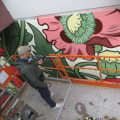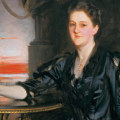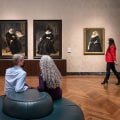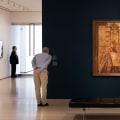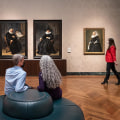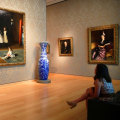As an art historian and expert on the cultural landscape of Essex County, MA, I have always been fascinated by the evolution of art galleries in this region. These spaces serve as a platform for artists to showcase their work and for art enthusiasts to appreciate and collect pieces that speak to them. But how did these galleries come to be and what is their significance in the county's history?
The Early Days
The history of art galleries in Essex County can be traced back to the early 19th century. During this time, the county was a hub for maritime trade and wealthy merchants who had amassed great fortunes through their businesses.These merchants had a keen interest in art and often traveled to Europe, bringing back paintings and sculptures to adorn their homes. As their collections grew, these merchants began to open their homes to the public, allowing others to view and appreciate their art. This was the birth of private art galleries in Essex County. These galleries were exclusive and only accessible to those who were invited by the owners.
The Rise of Public Galleries
In the late 19th century, there was a growing interest in art among the general public. This led to the establishment of public art galleries in Essex County, such as the Peabody Essex Museum in Salem and the Addison Gallery of American Art in Andover. The Peabody Essex Museum was founded in 1799 as the East India Marine Society, a museum dedicated to showcasing objects from around the world brought back by sailors.Over time, it evolved into a world-renowned art museum with a vast collection of Asian, African, and American art.The Addison Gallery of American Art was founded in 1931 by Thomas Cochran, a wealthy businessman and art collector. Cochran's vision was to create a space that would showcase the best of American art and provide educational opportunities for students and the public. Today, the Addison Gallery is known for its impressive collection of American art, including works by renowned artists such as Winslow Homer and John Singer Sargent.
The Impact of the Great Depression
The Great Depression of the 1930s had a significant impact on the art world in Essex County. Many private galleries were forced to close due to financial difficulties, and public galleries saw a decline in funding.However, this period also gave rise to a new type of gallery – the community art center. Community art centers were established to provide a space for local artists to exhibit their work and for the community to engage with art. These centers were often run by volunteers and relied on donations and grants to operate. The Rockport Art Association, founded in 1921, is one such community art center that continues to thrive today.
The Modern Era
In the 1960s and 1970s, there was a resurgence of interest in contemporary art, which led to the establishment of several new galleries in Essex County. These galleries focused on showcasing emerging artists and providing a platform for experimental and avant-garde works. One such gallery is the Montserrat College of Art Gallery in Beverly, which was founded in 1970.The gallery not only exhibits works by students and faculty but also hosts exhibitions by renowned artists from around the world. Another notable gallery is the Essex Art Center in Lawrence, which was founded in 1985. The center offers classes, workshops, and exhibitions, making it a hub for artistic expression and education in the county.
The Significance of Art Galleries in Essex County
Art galleries play a crucial role in the cultural and economic development of Essex County. They provide a space for artists to showcase their work, which not only helps them gain recognition but also contributes to the county's cultural identity. Moreover, art galleries attract tourists and art enthusiasts to the county, boosting the local economy. According to a study by Americans for the Arts, non-profit arts and cultural organizations in Essex County generate over $200 million in economic activity annually.The Future of Art Galleries in Essex County
The art scene in Essex County continues to evolve, with new galleries opening and established ones expanding their reach. The recent pandemic has also forced galleries to adapt and find new ways to engage with their audiences, such as virtual exhibitions and online sales. As we look towards the future, it is clear that art galleries will continue to play a vital role in the county's cultural landscape.They will serve as a platform for artists to express themselves and for the community to come together and appreciate the beauty and power of art.
